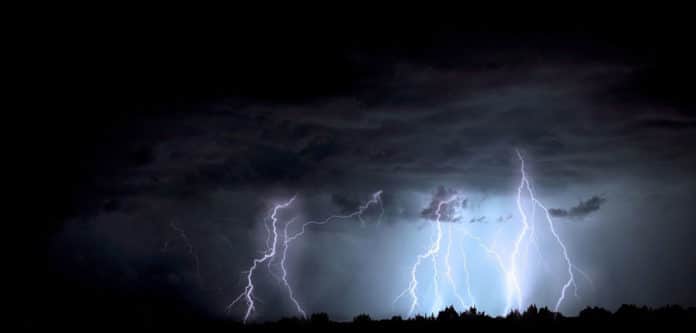The seminal Miller-Urey experiment in 1952 suggested that lightning could have led to prebiotic molecules necessary for the evolution of life, such as amino acids. At that time, scientists thought that the early atmosphere consisted of methane and ammonia. By the 1990s, experts argued for an atmosphere filled with carbon dioxide and molecular nitrogen.
A new study focuses on the early stages of lightning in the atmosphere of Primordial Earth, so-called streamer discharges. It found that early Earth’s atmosphere was less conducive to lightning.
According to scientists, the composition of Earth’s primordial atmosphere may have made it harder to generate lightning. This may have increased its time to generate and accumulate prebiotic molecules essential for life.
Electrons behave differently in methane and ammonia than in an atmosphere created mostly of carbon dioxide and molecular nitrogen. Hence, it is obvious that lightning discharges would behave differently, too. This could affect the possibility of prebiotic molecules forming on early Earth.
Scientists modeled the probability of discharge sparking to determine how frequently electrons and gas molecules would have collided in the two versions of Earth’s primordial atmospheres. They found that it’s harder to get lightning to spark in the carbon dioxide–nitrogen atmosphere.
Christoph Köhn, a scientist at the National Space Institute at the Technical University of Denmark, who led the study, said, “Basically, in the nitrogen- and carbon-rich atmosphere, you need stronger electric fields for a discharge to initiate.”
The atmosphere made of carbon dioxide and nitrogen atmosphere requires an almost 28% stronger electric field. Its because gas molecules and electrons are less likely to collide and build up electrical charges that can generate lightning strikes.
Scaling over space and time suggests that there may have been fewer lightning strikes in Earth’s history, so prebiotic molecules are less likely to arise.
Köhn said, “If lightning discharges were responsible for the production of prebiotic molecules, it’s important to get a very good theoretical understanding of what happened. The big question is, Where do all these prebiotic molecules come from?”
Scientists are further planning to model whole lightning strikes and couple that with models of atmospheric chemistry. These studies could offer a detailed view of how lightning may have been linked to prebiotic molecules.
Journal Reference:
- Rebecca Dzombak, Lightning Had Difficulty Forming in Early Earth’s Atmosphere, Eos (2022). DOI: 10.1029/2022EO220187
- C. Köhn et al., Streamer Discharges in the Atmosphere of Primordial Earth, Geophysical Research Letters (2022). DOI: 10.1029/2021GL097504
